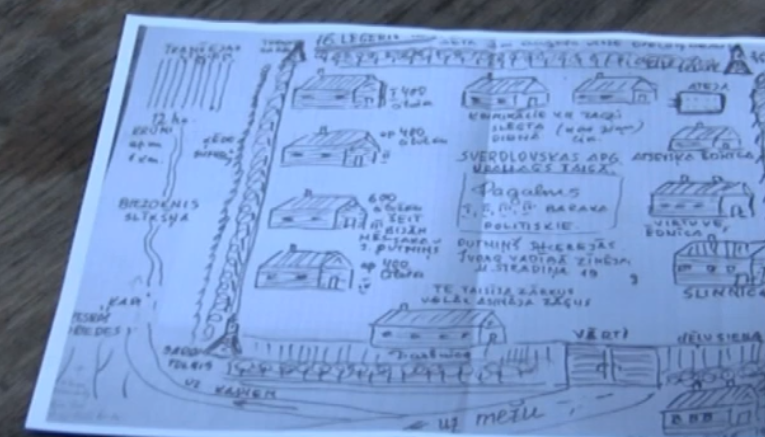Kārlis Brūvers, a local of Rugāji, eastern Latvia, has discovered just one such location where Latvians were sent to live and die by the occupying Soviet forces, with few permitted to return.
Brūvers' uncle Aleksandrs Siliņš died from hunger in the Sankino gulag deep in the taiga. The Sankino gulag is scantly attested to in literature, according to LTV.
"They had a dairy farm. They made butter and even exported butter to Britain," said Brūvers, describing his family before the war. "Our family was lucky, they weren't deported. The reason was that my great grandfather was on his deathbed in 1941. But the family of my grandfather's cousin was sent away, the one that lived 2 km away from here."
In 1941 hundreds of families were deported from Rugāji municipality, but Kārlis' family was able to flee to the West, and he therefore lived in Germany. He later returned to Latvia and learned that his uncle Aleksandrs Siliņš died in a work camp, while his daughter, two sons and wife were able to return from the Krasnoyarsk Oblast.
"I was very much moved by The Homeland That Was Stripped Away from Us, a book by my relative Margarita Stradiņa. There she describes the moment they were separated at the Rugāji train station," said Brūvers. "It spoke to me deeply as I have children myself. It was then that I decided that I would like to go to find where he was buried in the gulag."
Kārlis used deportee Ivars Putniņš' descriptions, as well as one Juris Bērziņš' letter, obtained through Margarita Stradiņa. Bērziņš' father Oskars was on the same train as Putniņš.
As Kārlis made progress based on these clues, he decided he had enough information to go to Russia. He contacted Yevgeny Lobanov, a Russian journalist from Yekaterinburg, who made some inquiries with local historians. They confirmed that there indeed is a mass grave in the location.
Without knowing any Russian, Kārlis came to Sankino with the help of a Russian journalist and some taiga hunters. They came across the Latvian settlements and mass graves, documenting the discovery on film. Locals likewise confirmed that this had indeed been a Latvian deportee settlement.
According to the sketch by Ivars Putniņš', there were about 2,000 people living in the Sankino gulag. By the time the Latvians came there, it had already collapsed as it had been built for other Russian deportees beforehand.
"Ditches were dug within a territory of 12 hectares. They dug trenches to throw the corpses in. I think I am not the only one whose relatives were sent there, as I understand all the men from the Abrene district were sent there," he said.
After Brūvers' 3,000 km journey into Russia, there's now a wooden cross to mark the final resting place of his relative.





























